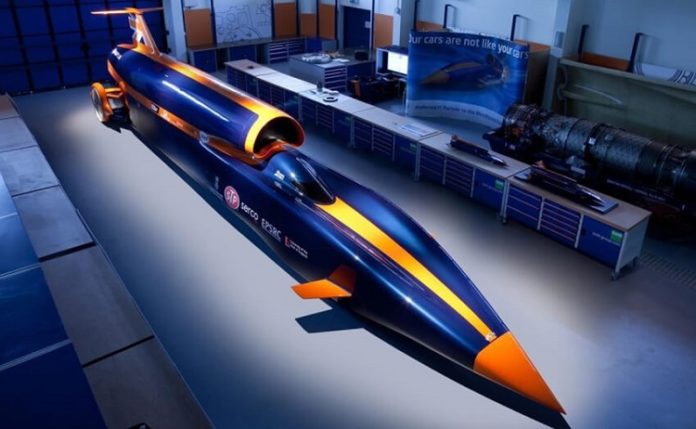The British Bloodhound SSC is set to smash the current world land-speed record of 763mph (1,600kph) to become the fastest car ever made. The world’s fastest car is set to race against the clock this year on a lakebed in the South African desert. And it’s not only about winning a title, the car forms part of a British education initiative to promote science and technology in schools…
What goes into making a car like this and who is the team responsible? This article takes a look at the engineers and designers behind this spectacular vehicle, the technologies they used to create it, the design software tools, and the materials used.
Unveiling the Bloodhound SSC
At the end of 2015, British engineers gave the first look at Bloodhound SSC and Lead Mechanical Engineer Mark Elvin described how it was built. Elvin said the biggest challenge was the wheels which spin at 10,500rpm and exert a radial G-force on the rim which is 50 000 times the force of gravity. Meaning 1kg of weight will weigh 50 000kg. The wheels are made of aluminium using a special process of compaction so that they’re strong enough to bear this force. It is truly a feat in modern design software techniques and product design engineering. Sarah Covell, head of IT, said, “When these things come along you have to just seize the moment and get involved because it is a once-in-a-generation project and it’s something I’ll always be able to look back on and be proud of.”
How did they do it?
The vehicle is the culmination of cutting edge technologies using design software and the talents of the Bloodhound SSC team. Making use of 3D design drawings, the front of this extraordinary car was designed like a racing car, made from carbon fibre monocoque. The back is like an aircraft with a metallic framework and panels. Propelled forward by a rocket engine, the front will lift off the ground as it picks up speed and the weight of the car will rest on rest on a surface of about 3 millimetres of wheel space.The Eurofighter Jet engine EJ200 is so powerful that if it would blast the car 25,000 feet if it was fired into the air. It will literally be “faster than a speeding bullet” (moving faster than a bullet fired from a Magnum 307) it will cover the distance of four and a half football pitches in one second and will gather speed exponentially, going from 0-1 000mph in 55 seconds.
Hakskeen Pan Desert
South Africans will have a special interest because the Bloodhound SSC team selected an area in the remote Northern Cape as the site where they will attempt to break the world land speed record. The team scoured the globe via satellite to find the location and decided on this desert pan in the north western region of the country. It wasn’t totally out of the blue though, Verneuk Pan is home of the famous Campbell track where driver Malcolm Campbell tried to beat the world record of 372km/h in 1929. Hakseen Pan was chosen for having a mud surface that is long, flat, dry and firm. More than 300 people from local villages have been employed to clear stones from the track which is 1.1km wide and 20km long.
Making the world’s fastest car wouldn’t have been possible without the best design software, product design and engineering. There is a range of software products available for mechanical engineering design. To achieve the best design, it is important that you choose the right software for your product. Click here to see what can be done with Autodesk 3D mechanical design and mechanical engineering products.





